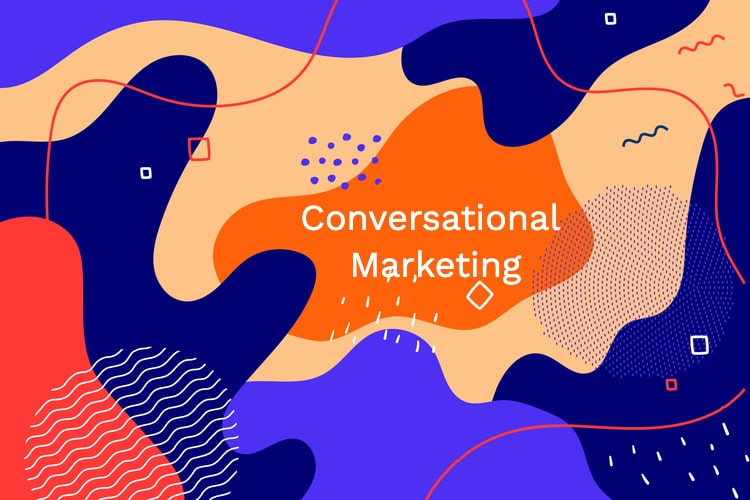All Educators know how to hack the brain. You should, too!
Your brain is a complicated system of integrated coordination for involuntary and voluntary physical reactions, and it’s responsible for learning, emotions, and memory. The brain hates boredom, benefits from physical exercise, works well with naps, and falls to pieces during stress.
That’s not too different from the way writers work.
The human brain constantly seeks communication. It reaches out to the body to read its signals, and then sends directives back. In nanoseconds, the industrious little brain (which only weighs three pounds) processes information simultaneously. Brain neurons can transmit several hundred information bits per second, making its processing capabilities far faster than any computer . . . for now.
The brain also reaches out to the external environment and others, constantly gauging situations and intent, and then reacting accordingly.
Educators have long known how to capitalize on the brain’s strengths and requirements for optimal engagement. They apply brain theory in teaching and learning by accommodating social interaction, creating engaging learning opportunities and allowing for repeated processing.
You can use these same strategies to create a content marketing strategy that captivates.
Target Content By Cortex Development.
Remember that all learning is developmental. Educators recognize that students aren’t capable of learning abstract concepts at young ages, and so they teach concepts accordingly.
The same must be true of the content you write; it’s also got to be largely developmental. Gear content marketing toward your audience’s developmental stage. The best copy takes into consideration the background and experience of consumers, neither talking down to them or around them. Avoid generalizing or making assumptions about your reader.
The writers at Content Marketing Institute are spot on when they say, “If it’s for everybody, it’s for nobody.” Marketing content must fit the audience; you can’t expect the audience to fit your content any more than you could expect the tiger at the zoo to become a vegan. It’s up to you to provide the fit.
Content marketing aimed at the wrong audience simply doesn’t work, and it’s the writer’s job to figure out what does. Millennials may not be as interested in financing a car as they will be in improving their quality of life, and although 80 may be the new 60, neither age worries about skinny jeans.
Personalize content writing to the consumer. First, identify who your unique consumer is, and then figure out what his or her true need is. Are they seeking awareness? Trying to solve a problem? Considering a product purchase?
Skinny jeans are not a one size fits all solution to dressing. Neither is effective content.
Observe Fight / Flight Dominance
The downshifted don’t care because they can’t care.
That’s because the brain’s limbic structure has gone to DEFCON 1 and shut down all unnecessary systems in an effort to protect the body from an imminent threat. The brain is downshifted.
The whole idea behind the fight or flight theory is that once the brain has determined that threat is imminent, the body is pushed into the corner where it finally has to make a decision: either pull the covers up over its head or come out swinging.
Hiding and swinging are not rationale reactions, but they are understandable, given the stressful situation. People can’t make rational decisions when they are like this.
Neither can your reader, the consumer.
To win your readers over at this stage, you have to bring them to emotional safety by showing in your content that you can be trusted.
Incorporate more copywriting techniques that build trust. Techniques for building trust in your writing include:
- Being yourself. You have our permission to be the unique person you are meant to be; let your voice shine through your writing.
- Telling the truth. That also means limiting the exaggeration. Do this and the reader will relax rather than trying to pick an argument . . . or leave the page.
- Using genuine, non-deprecating humor. Laughter really is the best medicine because it lowers blood pressure, boosts immunity and assists relaxation.
- Speaking with confidence. Don’t be a know-it-all, but do give the consumer the sense of being in good hands.
It’s not until readers reach that safety zone that they begin to listen to what you have to say.
Brains are Not Linear Processors
Brains network, and so should you.
You might think it would be nice for the human brain to process everything in a linear fashion, but that’s not how it works. The brain processes decisions, thoughts, directives, and bits of information simultaneously. Processes in the brain overlap.
That’s why you can do several things at once, like working on a project with a deadline while wondering what you are having for lunch and figuring out how you still can swing by the dry cleaner’s before they close.
A well-written copy also performs several tasks at once. It should inform, entertain and provide some value to the reader. One of the ways to do this is by creating deep connections.
Try different ways to connect, such as through hyperlinks. Create the kind of links that take the reader on a wonderful adventure designed to help him learn more as long as these links are relevant and not pepper-sprayed throughout the content. Remember that you’ll need plenty of content so you can link deeply.
The other way to create connections is by opening a dialogue with your readers. Invite them to share their knowledge and experiences. Everyone benefits from the collaboration, and the added bonus is that you are able to understand more clearly the reader’s needs.
Attention Follows Emotion
You had my amygdala at hello.
Emotion gets our attention every time. If you are willing to share emotion, the reader gets to see you for who you really are. Emotions also cement learning and memory.
The cool thing about the amygdala is that this tiny almond-sized organ actually helps the brain embed learning for later. However, the only way this little nugget will accept anything into long-term memory is if it is attached to emotion. No emotion means no entry; the reader has no reason to remember your content.
Create a content marketing strategy that allows you to get to know your consumers and connect with them emotionally, and you will be remembered as a valued resource.
Of course, people don’t buy based on emotion alone. According to content writer Catherine Sherlock, readers use logic and emotion in copywriting. The trick is to balance emotion with reason, or you’ll leave your reader feeling manipulated.
Creating excellent content is really is about creating lasting relationships that are built on trust.
Brains Choose Meaning Over Isolated Facts
Get Out The Shears; It’s Time To Prune Again!
The human brain goes through remarkable spurts of learning and pruning. The brain absorbs all kinds of wonderful information that may or may not be useful later. These connections to memories and learning are eventually pruned if they are not frequently accessed – it’s the whole “use it or lose it,” idea. Dendrites thicken and then are naturally thinned out again. It’s totally normal.
The good news is that your brain has one hundred billion neurons. That means even if your brain pruned a million neurons a day for your entire life, you’d never be half-brained.
Every six or seven years, the brain gets rid of unused and random information that it no longer finds useful, which explains why you might not be able to remember your first phone number or what you had for breakfast on March 14, 2009. Unless there was strong emotion connected to either event, your brain has dumped the information.
There is a lesson here for content marketing. Overstuffing the brain with unwarranted and unnecessary facts actually diminishes memory; it does not heighten it. Gratuitous facts will be forgotten even if your reader survived their numbing effect.
The Internet works the same way with your content copy. Gratuitous links will be overlooked even if your browser survived a search engine’s screening. That’s why careful SEO optimization can make or break your content marketing.
The brain’s process for pruning is similar to how SEO language works; the curiously subtle is far better than the blatantly obvious. Even your computer knows that keyword stuffing is one of the worst sins you could commit. Filling up your content page with a plethora of keywords reads unnaturally, tips off algorithms, and hurts your page ranking. Keep in mind that keywords are the chocolate of writing; a little goes a long way.
Instead, coordinate the use of keywords and tags in your content for search engines, much the way you organize quality content to create an enjoyable experience for the reader. Compelling content creates interest, which leads to engagement. It is engagement – in the form of clicking on useful links or adding comments – that drives copy upward in search engine rankings.
Not sure how to handle keywords and SEO? Go to the best for their advice. We like these SEO recommendations for 2015.
Brains Constantly Look For Patterns
Teachers know that providing patterns for analysis is a great way to foster learning.
That’s because people learn by searching for and analyzing patterns. It’s human nature to look for cause and effect. It’s how people interface.
Your copywriting content, too, includes patterns that assist the reader. Whether you use subheadings, bulleted lists or parallel structure, your reader deduces and constructs meaning from the patterns you provide.
Your reader, though, is not the only one relying on the patterns you create. Google and other search engines are constantly looking for patterns, and that means that your content must include the right kind of patterns to drive traffic.
Using static patterns over and over in your content can cause your content marketing rank to plummet. Instead, approach your content and how you create links in a fresh way that delights rather than detracts. Think of this as creating something beautiful, full of emotion and artistic creativity, like the artist who combines insight with the skill to create fresh and original art. Anything less is simply paint by number, and it bores the brain.
Creating uninteresting link patterns is the paint by number strategy for SEO language.
It’s better to create intriguing patterns that will engage both the reader and the search engine.
Brains Love Novelty and Color
The brain is wired to always be on the lookout for new things. Novelty brings with it the potential for reward, and that is something the brain loves. The human brain can’t help but be drawn to the unique.
Combining ideas in unique ways creates the kind of novelty the brain craves. Your readers love what is new and clever, not what has already been done over and over.
Just like the anticipation of sipping a brew of richly roasted coffee beans infused with ancho pepper, vanilla bean, and cocoa, fresh ideas also bring a sense of anticipation that delights the senses. It’s the contextual incongruity – the state of things that don’t belong together — that works to capture attention.
The brain loves color just as much as it loves novelty. Think about how pops of color catch the eye, leading away from what is otherwise a mundane world. Your content will perform best with colorful eye-catching images and meaningful infographics. Remember that search engines are “blind” and cannot see pictures, so you have to create tags for them so search engines can view and catalog them.
Today’s world contains so much information that presenting visuals does two things for your reader. First, a visual captures the essence of the concept, allowing your reader to decide if it is also worth reading the accompanying text. The visual is also a way to get the information in front of the reader a second time.
Connections Matter
There are two kinds of learning: spatial and rote.
Rote learning is the memorization of information bits, much like the way you learned some facts in school. The other type is spatial learning, where you make connections between old learning and new learning. The awesome teachers you had helped you make these connections with collaborative learning experiences like making a flying shoebox or acting out and filming The Tempest with Lego people.
The brain prefers spatial learning.
At its simplest, spatial learning involves learning with pictures. However, spatial learning is also about creating deep connections in meaningful ways.
Your content is more marketable if you help your reader with similar connections. What resonates with your consumer? Find these ways to connect and engage in copywriting, and you will have found a way to ensure a following.
Social interaction is important to learning, and it is also important to your content marketing strategy. The more you can get readers to interact with your content, the more likely you will become a valuable resource for them.
We Are Always Learning
Teach; don’t preach in your content writing. Engage and inspire, and leave the reader better than before.
If you keep your consumer learning and growing, you will develop a following. At the first hint of lethargy and stagnation, your reader is gone. There’s too much other stuff out there vying for every reader’s attention.
You can avoid boring topics in content marketing by:
- Keeping your audience in mind
- Asking curious questions
- Answering the question your audience wants to know,
- Using Storytelling in Your Content, and
- Conducting exploratory research.
If you are not sure where to pluck ideas from, look to your computer. Some of our favorite research includes searching long-tail keywords in a variety of places, such as
- Googling Google Suggest and Google Trends
- Watching for related suggestions
- Trying specialty search engines, such as Keyword Tool and Key Word Niche Finder
- Checking the Wikipedia Contents box for alternative keywords
- Perusing Pinterest, Facebook, LinkedIn, Instagram, and
- Reading voraciously and asking questions
Long ago there was a popular phrase known as GIGO, or Garbage In, Garbage Out. The GIGO concept is not far fetched at all today. Content marketing and content strategy today won’t permit sloppiness or poorly written copy.
Neither will your reader.
And that’s why you should use some of the same brain-based hacks used by educators when creating strong content marketing material that will attract and retain customers.
So now that you know these 9 hacks, tell us how would you elevate your reader with brain-based strategies in your content writing?












